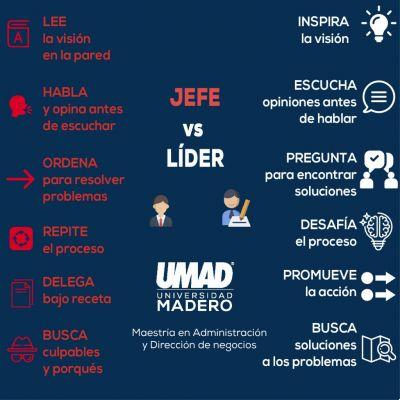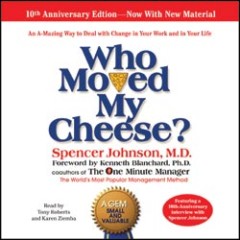Do you think it is possible to increase the level of well-being and happiness by paying attention to 5 factors? This is the purpose of the PERMA model. Find out how to put it into practice.

Last update: October 05, 2020
We talked more about the importance of accepting our emotions, positive and negative, to put an end to the obligation to always be happy and at any cost. We think, however, that it is equally important to know the useful tools to increase our satisfaction and our well-being. Among these there is the PERMA model, designed by Martin Seligman.
What if we told you that by increasing the quantity and quality of five factors, well-being increases dramatically? Sounds unbelievable, right? Let's see what the model developed by Seligman consists of and how to put it into practice right away.
Let's discover the PERMA model
The PERMA model is a theory of well-being developed by Martin Seligman, considered the father of positive psychology. It describes our unforced choices in an effort to be happier.
This model appears as an extension of the three-way model to happiness. Seligman, in fact, believed that there were three paths to take to happiness, paths which, as we will see, are very similar to the factors of the PERMA model.
- A pleasant life. It aims to increase positive emotions related to the present, the past and the future.
- A life made of commitment. It's about tapping into our potential for flow experiences.
- A meaningful life. It refers to the meaning of life and the development of goals that go beyond one's particular interests.
PERMA is the acronym of the 5 elements on which this theory is based and which we will immediately see in detail. Developing each of them increases our optimism, our motivation and our satisfaction. Nonetheless, these factors must meet the following conditions:
- They must contribute to well-being.
- They are chosen for the good of the person and not as a method to reach the other variables.
- They must be measured and defined independently of the rest of the variables.
As Seligman says, not all factors require the same type of work, and developing them should never be an obligation. We should engage more deeply in those we identify with most. The American psychologist explains that this model is a simple description of people's actions to be happy, not a prescription.
“Happiness is not something ready made. It comes from your own actions. "
– Dalai Lama –
P- Positive Emotions (Emozioni positive)
This point is to amplify positive emotions, not to mask the negative ones, but to use the former as a tool to overcome the latter.
Positive emotions allow us to feel satisfaction with life and to remain optimistic in spite of adverse circumstances. Some examples can be love, tranquility, fullness, pleasure, etc.
Happy people not only tolerate pain better and make better decisions when their health and safety is threatened. Positive emotions can cancel out negative emotions. "
– Martin Seligman –
E - Engagement
It is a pact that we must make with ourselves, with our potential and our strengths. The aim is to achieve equilibrium and enter a state of flow, that is, of optimal activation.
We usually reach the state of flow, or flow, when we are focused on an activity and experience a kind of "time stop". It is therefore a question of committing ourselves to seeking activities that immerse us in this condition.
“Flow is difficult to achieve, it takes effort. Flow doesn't mean wasting time. "
– Mihály Csíkszentmihály –
R – Relationship (Relazioni positive)
As social beings, relationships are one of the irreplaceable sources of well-being and satisfaction, as they offer support and protection.
Establishing satisfying relationships is necessary for proper personal growth. We must therefore take care of relationships with family, friends, colleagues, etc.
Within this factor, which implies an improvement in social relations, we must also include the improvement of our skills and our social tools.
M - Meaning and purpose
Seeking meaning and purpose in life, which go beyond our individual goals, beyond our person. It could be the question "what can I give to the world?".
In this way, all our goals, our goals, our achievements will have a much more transcendental background which will give them great social and moral value.
"As a good life is more than having a nice life, a meaningful life is beyond a good life."
– Martin Seligman –
A - Accomplishment (Success and achievement)
It is about setting goals that as they are achieved, increase our sense of competence and level of autonomy.
"Flow in life occurs when our highest abilities match exactly the challenges we face."
– Martin Seligman –
How to put it into practice
- To work on the positive emotions module we can carry out exercises in which they imagine situations capable of generating such emotions.
- In the case of commitment, effective work is making a list of the activities that normally get us into the state of flow. We can then commit to doing them weekly, monthly or annually (depending on our possibilities).
- To do a good job of improving social relations, the first step is to assess their status. Explore the quantity and quality of our relationships it should give us clues as to which ones require more attention and effort.
- A good way to find meaning in our life is to ask (and answer) simple questions every day like: “What is my role? What did I come into the world for? Can I improve my contribution? ”. Finding the answers to the above questions will also awaken our desire to be involved in meaningful activities.
- Be aware of our resultsNo matter how small they are, it's a great way to feel fulfilled and motivated, which encourages us to set other goals and strive to achieve them.
The PERMA model is easy to follow and its benefits are numerous and important. Now it's up to you to put it into practice and find out for yourself. And remember that ...
"True happiness comes from raising the bar for ourselves, not confronting others."
– Martin Seligman –
Work on yourself. You will like it.


























